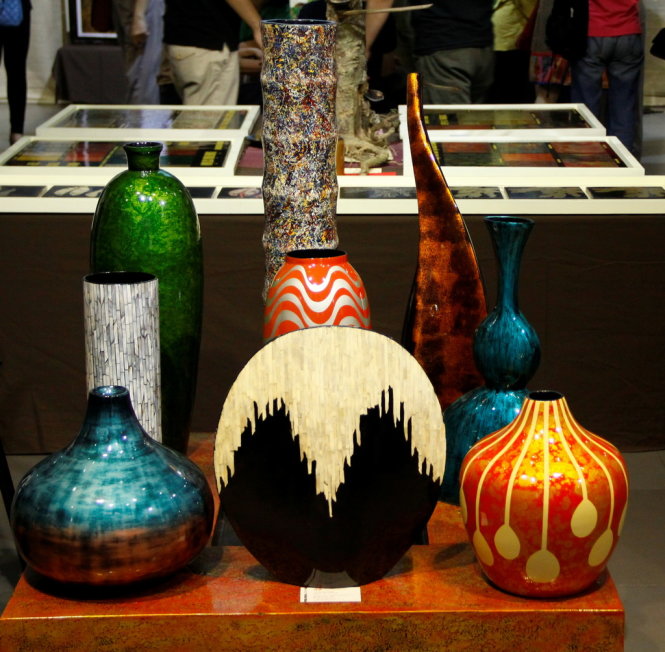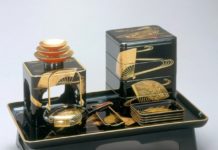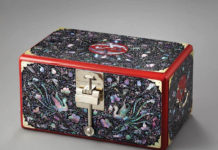Lacquer has been in Vietnam for many generations. It was formerly used to decorate temples, pagodas, palaces, and worshipping appliances in families. The Vietnamese ancient lacquer mainly uses three colors, which are black, red, and gold. From the early nineteenth century, the Indochina Fine Arts College working along with artists enhanced the technical reforms of lacquer, enriching its value as art. Lacquer hence includes more crafts for decorating approach, using more materials and colors. Currently, there are 31 handicraft villages and more than 15,000 craft workers involved in lacquer.
 Sumac, grown in Phu Tho province, is the origin of lacquer paint, and is rated as the best paint by Japanese experts. The fresh paint is opaque and milk-coloured. When being stirred with a wooden slat in pots or bamboo-made baskets, it will become a golden-honey colour after 15-20 hours. If being stirred by an iron bar in a cast iron pan, it will become very dark black. Fresh paint, honey paint, and black paint are all used in the lacquer.
Sumac, grown in Phu Tho province, is the origin of lacquer paint, and is rated as the best paint by Japanese experts. The fresh paint is opaque and milk-coloured. When being stirred with a wooden slat in pots or bamboo-made baskets, it will become a golden-honey colour after 15-20 hours. If being stirred by an iron bar in a cast iron pan, it will become very dark black. Fresh paint, honey paint, and black paint are all used in the lacquer.
Since the lacquer is only for surface decoration texture, the “bone” (substrate) of the product should be made first. The bone for the lacquer can be made from a variety of materials, mostly plank wood, turning wood, sculpture wood, paper mache, ceramics, and composite. Being coated with multiple paint layers, each layer is repeated many times, producing between seven and fifteen layers. After each coat, the product should be dried out, sanded smoothly before the next coating of paint. First, one paints one coat, then glues a thin layer of fabric. The second layer is a mix of fresh paint with clay and sawdust. The third coat combines fresh paint with alluvial soil. The fourth layer is fresh paint, and the last layer is in black. After sanding, the surface is ready for decoration. The most simple one is to paint in red or black.
Lacquer can be decorated with drawing or addition. Patterns can be created with paint and materials can be added including egg-shells, pearl-shells, gold or silver pasting, or silver powder. The special technique of Vietnamese lacquer painting is to paint many layers over layers, then sand them to reveal the inner paint layer, creating a special visual effect. Finally, the product is covered with the honey-like color layer, and is polished at the end.
The most well-known lacquer village is Ha Thai Village, Hanoi, owning many diverse types of products. Son Dong Village, Hanoi specializes in lacquering sculptured works such as statues and worshipping applications. Cat Dang Village, Nam Dinh specializes in lacquering bamboo-made products. Some famous artists are Mr. Vu Huy Men (Ha Thai Village), Mr. Nguyen Huu Sang (Tuong Binh Hiep Village), Mr. Nguyen Van Thach (Son Dong Village).





